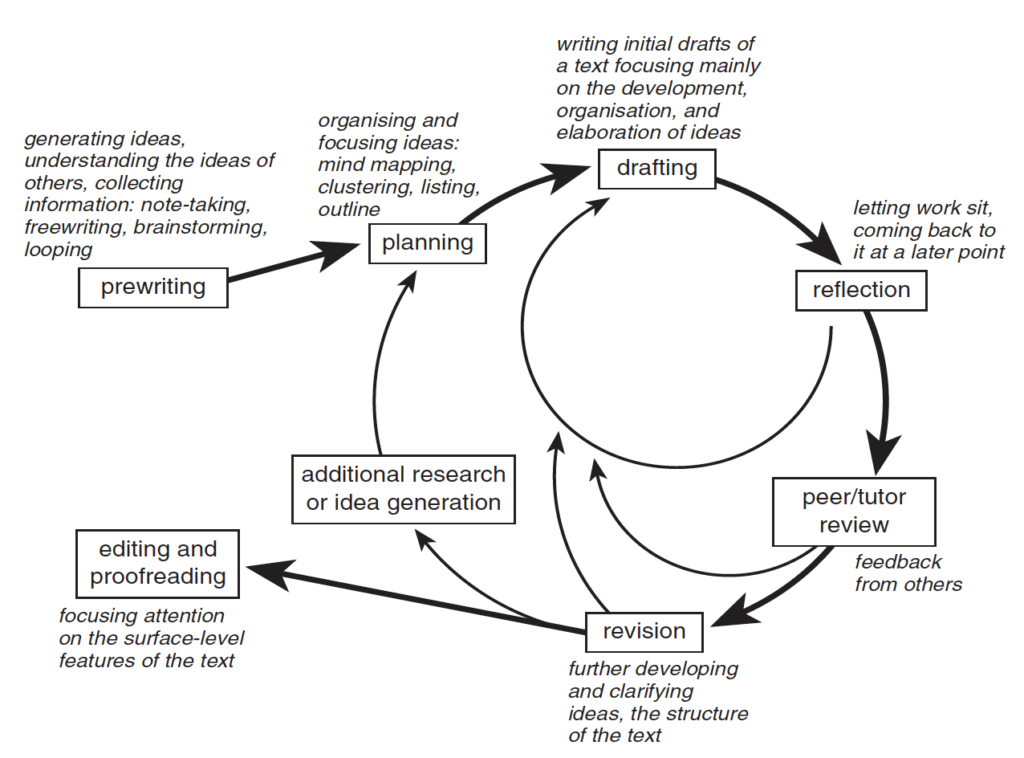What, according to you, is a “boring” topic for a content writer? Something that makes you stare at that blinking cursor on the screen? Something that doesn’t light the creative spark in you instantly?
Or something that makes you question if your readers will even be interested in reading it? (Well, considering most readers only get through 60% of an article, it wouldn’t be too wrong to believe that!)
Now while I can go on about how a mundane topic can make you feel, let’s take a moment to think: are the blog topics you’re working on really dull? Probably not.
There is no such thing as a boring topic. Even the most “bland” or “dull” industries create content because people need information about them.
You might find it dry, but there is an audience waiting to learn more about something as mundane as selecting light fixtures for their home! So it doesn’t hurt to have a little fun with your content.
#1 Dig Deeper
There’s no way you can make your writing enjoyable until you know your stuff. Perhaps you find a topic boring because you don’t know what it is about.
Take this as your chance to shine and start by educating yourself on the matter.
To do so, take the following two steps:
1. Understand the industry as a content writer
Before you dig deeper into the topic, research more about the industry. Because the more you learn about something, the easier it will get to relate to the topic and write about it.
2. Identify what people want
Go beyond industry blogs and company websites to Q&A websites and forums like Quora to see what industry-specific questions people are asking. This will help you broaden your knowledge and come up with a unique angle.
Once there, use the following framework designed by M.J. Curry and A. Hewings “Approaches to teaching writing,” in Teaching Academic Writing: A Toolkit for Higher Education.

#2 Angle it Right
What is the most challenging yet most worthwhile part of the writing process?
Ask any content writer, and they’ll tell you how tricky it is to find a unique angle. Now throw a mundane topic in the mix, and you’ve got yourself a real problem.
But taking up exciting angles that you and the audience can relate to can make all the difference.
The target is to engage your audience quickly – because, chances are, 55% of your readers will spend less than 15 seconds on your content. This means you have 15 seconds to establish a solid angle for the audience that makes your boring topic come alive.
If you’re stuck figuring out a strong angle, ask yourself these questions:
- What will your audience (or you) relate to?
- Is there a personal incident you can include?
- Or maybe you can connect the topic with any latest event?
In the post, Quora Marketing: ~1 Million Views Generated. Here’s How to Replicate Our Success, Si Quan Ong starts by sharing a personal anecdote:
“Since July 2018, I’ve been active on Quora, answering at least five questions a week on topics related to Ahrefs, SEO, and digital marketing. In that time, I’ve accumulated hundreds of thousands of views.”
This not only boosts Ong’s credibility as a writer, but provides social proof for his tips as well. This is a tried-and-test formula used by many LinkedIn users as well.
Here’s one example you can emulate.
Once you find an angle that excites you, the writing process becomes fun, and you create a compelling blog post for the reader.
#3 Build Excitement with a Story
Getting your readers’ attention is as easy as catching a fish with your bare hands. And with a dull topic, even the most experienced content writers find it challenging to make things fun.
So what should you do? Try the age-old trick: tell a story.
Channel the natural storyteller in you and build a captivating narrative around that otherwise boring topic.
People love stories. A well-written tale can not only ignite your readers’ emotions but also adds a touch of humanity to your writing.
For inspiration, see how Salesforce is humanising the otherwise dull and drab section of customer success stories.
This is how they begin the story!

What a clever way to reel in the reader and introduce the challenge ENGIE, their customer, has been facing.
#4 Tune into Your Sense of Humour
Writing a blog post with a touch of humour can add life to even the most uninteresting topics. And trust me, your audience will remember it for a long time.
Don’t shy away from tuning into your humorous side and being a little informal with the reader – it doesn’t take much to make your reader smile.
Just keep it natural. Crack a joke, share a funny anecdote, or include a pop culture reference.
As long as your humour is relevant and doesn’t disconnect the reader from the topic, a light-hearted tone will engage your audience and make writing more entertaining for you.
If you’re not sold on the idea, perhaps getting a 250% increase in qualified leads will change your mind.
In 2015, Lenovo came up with a tongue-in-cheek series of The Office-style mockumentaries. They sympathized with IT professionals by showing relatable moments and odd situations they experience in everyday work life.
This was a massive hit among the IT staffers, and garnered some ridiculously good results.
- 250% lift in qualified leads
- 87% Video Completion Rate
- Activated over 91,600 out of 185,000 dormant leads (target = 34,000) in one quarter
- 65% of all leads generated had been exposed to the videos we produced
- Winner of 17 B2B Marketing awards
Watch the hilarious video below!
#5 Ditch the Jargon
If you’re working in a technically complex industry, you’re probably used to writing blog posts with industry terms and jargon.
While using jargon can illustrate your domain expertise and industry knowledge, it is exactly what can make a topic boring to read (or difficult to understand!).
Not all of your readers have the same access to the industry jargon as you do. So it’s always better to write in your reader’s language.
B2B copywriting can be better. Here’s how.
- Use relatable examples or analogies to explain a complex topic
- Change heavy information into infographics or images; visual content always works
- Analyse your work using writing and grammar apps like Grammarly or Hemingway
- Ask someone to read your work and get feedback
#6 Make it Fun with Visuals
Writing a blog post is more than about fresh ideas and flawless writing. Get ahead in the game and experiment with visual content to add more excitement to a boring topic.
Why? Because for most people, visual content is easier to consume and retain. In fact, according to a survey by Venngage, 49% of marketers peg visual content as critical to content marketing, while 62% use visuals in blog posts.

Here’s how you can use media to transform a boring topic:
- Have some interesting facts or statistics to share? Include infographics
- Need to explain a long, complicated concept? Rely on a storyboard
- Want to add humour to your content? Make your readers laugh with a meme or a GIF
- Or simply give your reader a mental break from reading with a relevant video or image
When a topic looks bland and uninteresting, visuals make it a little less boring and a little more fun. After all, a picture speaks a thousand words, right?
Tools to Use:
#7 Keep It Short
Imagine you’re stuck in an elevator with someone who can’t seem to stop talking. You cannot wait to go home and crash on the bed, but no matter how much you try, they won’t get to the point.
Well, writing can drag on like that.
As a content writer, you’ll always be dealing with an impatient reader. And you’ll always want to include every fascinating piece of information to add value for the audience. But, if you have a boring topic, readers are even less likely to spend time on it.
So keep it short and straightforward. Focus on what you have to say, and say it in the least words possible.
Omit anything that makes your blog less interesting – you’ll be surprised to see what magic even a few words can create.
Carpe Diem, Content Writer!
For a content writer, nothing is more challenging than dealing with a dull, mundane topic. But remember, it is not as complicated as it looks – all you need is a changed perspective, a striking angle, and maybe some wit to make the writing process more fun.
The next time you’re struggling with a “boring” topic, don’t forget to check these amazing tips to breathe new life into your content.



5 thoughts on “How to Make Boring Topics Come Alive- A Guide for Clueless Content Writers”